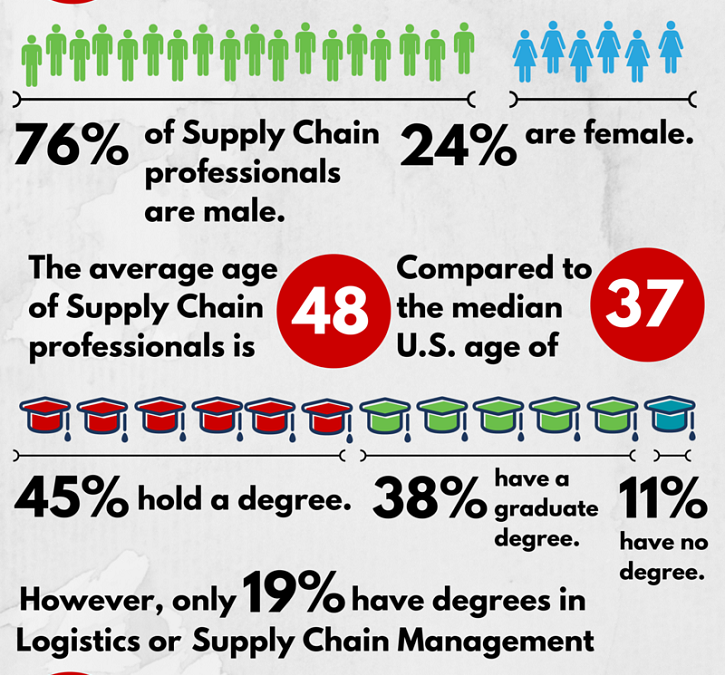
by Fronetics | Sep 15, 2016 | Blog, Content Marketing, Marketing, Strategy, Talent
Content marketing is significantly more effective when a designated leader is driving your strategy.
Who is leading your content marketing strategy? If you don’t have an immediate answer, your content marketing program probably will not be as effective as it could be.
Research shows that companies who designate someone to drive the execution of their content marketing strategy have greater success than those that do not. So your strategy should account for leadership, specifically naming a person or position that will be in charge of implementation, problem-solving, and measuring results.
Who could take on this role for your business? Here are a few ideas.
An executive
Curata reports that, by 2017, 51% of companies will have an executive in their organization who is directly responsible for an overall content marketing strategy. That’s how important it is to have someone leading your strategy: More than half of organizations will create or designate positions like chief content officer, VP of content, or director of content. If your company is large enough to support this human resource, you’ll likely reap great benefit from your content marketing efforts.
A marketing director
Is there a senior person on your marketing team with experience using content as a marketing tool? Having a marketing director lead your content strategy is a great option for companies who can afford to delegate some of that person’s responsibilities elsewhere to make room for this work. Marketing directors are generally organized and capable of leading a diverse team, and they are used to reporting on KPIs as they relate to marketing efforts.
Whoever produces most of your content
Many smaller or mid-sized companies don’t have large marketing teams, and instead rely on several people to take on content-production responsibilities in addition to their everyday tasks. These are the people who will be most familiar with your company’s content and strategy, and how they align with your business goals. Do any of these people have leadership abilities or experience running a cross-functional team? It could be worth outsourcing some content writing or production in order to allow that person to drive your content marketing strategy.
An advisory firm
Sometimes you don’t have the internal resources or expertise to execute your business’ content marketing on your own. Hiring a firm or professional to create and/or execute your strategy can take enormous pressure off of your employees. They are left to do their jobs, while an experienced team shoulders the burden of planning, producing, and reporting on the progress of your content marketing program. Such a partnership can be very beneficial to companies of all shapes and sizes.
Related posts:


by Elizabeth Hines | Sep 12, 2016 | Blog, Logistics, Strategy, Supply Chain, Talent
Today’s hiring managers in the supply chain face a number of challenges, so making the right hire is more difficult, and more important, than ever.
Finding the right person for a job opening is essential. Hiring the wrong candidate can be costly, not only in terms of team morale and productivity, but financially as well. The U.S. Department of Labor estimates the average cost of a bad hiring decision to be as much as 30% of an individual’s first-year potential earnings. That means a single bad hire with an annual income of $50,000 can equal a potential $15,000 loss for a company.
Given the demand for supply chain talent, the dearth of experienced talent, and an increasing number of newly graduated talent entering the job market, how do you make sure you extend an offer to the right person? Here are a few tips on hiring the right supply chain employee.
Look within the company
Is there someone within your organization who would thrive in a new role — even if the role is outside of their current field?
Look across the industry
Look at your competitors’ employees and identify individuals who are a good match to your company and the role.
Look outside the industry
A talented professional from outside the industry could provide fresh ideas and insight that would greatly benefit your company. Look for someone with transferrable skills and a willingness to learn a new industry.
Work with colleges and universities
Develop a relationship with colleges and universities. Work with the schools to identify upcoming or recent graduates who are/were stars. Another option is to establish an internship program with a school.
Work with a strategic advisory firm
Working with a strategic advisory firm is an option, as well. This type of partnership, such as the ones I build with our clients, can make identifying the right talent for the right position easier. An advisory firm often has the pulse on where the most talented people are in the supply chain and logistics industries. The firm can launch a successful candidate-search process, get new hires up and running, and help retain talent for the long run.
Be creative and have vision
Throughout the hiring process remember that creativity and vision are key.
Offer an out
Zappos pays new employees to quit. You read that right: The company pays new employees to quit their jobs. Once new employees have completed a 4-week training program, they can choose to remain with the company or quit. If they choose the latter, they walk out the door with a $4,000 bonus. Offering such an out may seem crazy. But the reality is that when unhappy employees leave the company within their first four weeks of employment, the financial implications are much, much lower than the cost of unhappy employees who are likely to be uninspired at work and quit in less than a year.
Related posts:

by Elizabeth Hines | Sep 5, 2016 | Blog, Leadership, Strategy, Talent
Some companies include failure as a performance metric, but establishing a culture of innovation is a better inflection point for success.
Media executive Jason Seiken is known for taking the Washington Post online and for turning PBS into a digital media powerhouse. Several years ago, he wrote an article, How I Got My Team To Fail More, which described his efforts at PBS to create an entrepreneurial culture by requiring members of the digital team to fail. Seiken wrote:
“Soon after arriving at PBS, I called the digital team into a conference room and announced we were ripping up everyone’s annual performance goals and adding a new metric. Failure. With a twist: ‘If you don’t fail enough times during the coming year,’ I told every staffer, ‘you’ll be downgraded.’ Because if you’re not failing enough, you’re playing it safe. The idea was to deliver a clear message: Move fast. Iterate fast. Be entrepreneurial. Don’t be afraid that if you stretch and sprint you might break things. Executive leadership has your back.”
Five years after introducing the failure metric to PBS, unique visitors to PBS.org doubled, and in each of the first seven months of 2013, PBS.org was the most-visited network TV site (beating out ABC, CBS, NBC, and Fox). Additionally, video views on PBS.org and PBS.org’s mobile platforms rose 11,200%.
Was requiring failure the key to success? Not all those who read the post believed so. Rather, many readers suggested that the creation of a culture of innovation, one supported by executive leadership, was the inflection point for success.
The idea that innovation in business or an entrepreneurial culture is brought about by leadership is one put forth by many, including Robert J. Herbold. In his book What’s Holding You Back: 10 Bold Steps that Define Gutsy Leaders, Herbold submits that it is the responsibility of a leader to establish a culture of innovation. That is, a leader must communicate a goal of innovation to his/her employees; encourage employees to aspire to innovation; reward innovation; and instill a sense of urgency.
I see innovation and entrepreneurism as the goal and not failure. For this reason I believe the focus should not be on failure, but instead should be establishing a culture which supports innovation. Yes risk-taking and failure are likely components of innovation, but they are just that — components. “Requiring failure” may be sexy, but I believe supporting innovation is more likely to be the game changer.
What do you think? Is failure a requirement for success? Should leadership focus on encouraging failure?
Related posts:

by Fronetics | Sep 1, 2016 | Blog, Strategy, Talent
Try these four networking tips to stop feeling guilty about developing relationships to advance professional goals.
Does networking make you feel dirty? Research published in Administrative Science Quarterly confirms you are not alone. The authors suggest that acting in self-interest in pursuit of our career goals can affect our sense of morality.
But, as we know, professional connections are essential to advancing your career, pursuing new opportunities, and earning new business. But how can we get past our distaste for networking?
An aversion to networking can be overcome, according to research by Tiziana Casciaro, associate professor at the University of Toronto’s Rotman School of Management; Francesca Gino, professor at Harvard Business School; and Maryam Kouchaki, assistant professor at Kellogg School of Management, Northwestern University. The team identified four strategies for learning to love networking, and published their findings in a recent Harvard Business Review article.
1) Focus on learning
People who approach networking as a necessary evil do it less often and consequently underperform in certain aspects of their jobs. Instead of viewing the next work outing as a chore, shift your mindset to focus on the possible positive outcomes — like gaining knowledge or skills that will help you do your job better.
2) Identify common interests
How do your interests and goals align with the people you meet? People establish the longest-lasting connections when working together on tasks that require contributions from both parties. When you identify mutual interests or objectives with networking contacts, your relationship is more likely to be authentic and to stand the test of time.
3) Think broadly about what you can give
When you don’t have an obvious mutual interest, try offering some kind of value to the relationship. Even junior-level employees, who don’t have company stature or connections to extend, have more networking capital than they may realize. Less tangible things — such as gratitude, recognition, and enhanced reputation — can be highly valuable, the authors suggest.
4) Find a higher purpose
Rather than focusing on the personal benefits, consider the collective value of forming professional connections. Will building relationships help your clients? Will more visibility in professional circles or at industry events enhance your company’s reputation? Framing networking in terms of a larger goal can make the activity more palatable, even helping you to see it as a beneficial opportunity.
Related posts:

by Jennifer Hart Yim | Aug 24, 2016 | Blog, Manufacturing & Distribution, Strategy, Supply Chain, Talent

The Supply Chain industry is changing, while it’s becoming harder for companies to hire at the same time. These supply chain demographics provide a picture of the industry today.
This guest post comes to us from Argentus Supply Chain Recruiting, a boutique recruitment firm specializing in Supply Chain Management and Procurement.
Everyone knows the Supply Chain field is changing. Recently, one of the best Supply Chain publications out of the U.S., Supply Chain 24/7, released a report that examines the demographic trends underlying the industry. The report, titled “A Portrait of the Supply Chain Manager,” used research survey data from Peerless Research Group and APICS to present a picture of the typical individual working in Supply Chain. The survey asked a number of Supply Chain and talent-related questions, such as:
- What percentage of Supply Chain professionals received a raise last year?
- What percentage of Supply Chain managers hold a degree?
- What percentage of companies are willing to pay above-market compensation for the right people?
And more. These issues are sure to be of interest, whether you’re looking to hire in Supply Chain or just to get a holistic picture of the field. So we put together this spiffy infographic that highlights the answers to these questions and some other interesting datapoints from the report. Check out the infographic below!

We hope you found the supply chain demographics infographic informative, and we encourage you to dig into the full report for even more insights about where Supply Chain professionals stand and where the field is going. And (as always) stay tuned for more info and perspective about Supply Chain and talent from Argentus in the coming days and weeks!
Related posts:

by Fronetics | Aug 17, 2016 | Blog, Strategy, Talent

If your job has left you to feeling stuck in a rut, try these steps to improve your professional life.
Summer vacations are over, and the year is more than half gone. Perhaps all those best-laid plans for boosting your career this year have yet to come to fruition. You may be feeling as burnt out as those last colorful leaves before they surrender to the fall.
If this frustration sounds familiar, it may be time to shake things up and move your career in a new direction. Carpe autumn!
Here are 9 tips to propel your career forward:
Make the move
Unhappy at your present job? Identify the reasons. If you are frustrated with your current role but you like your company, inquire about other positions within the organization. If none are a good fit or there are no growth opportunities, consider looking elsewhere. Use every job-search tool available — network, use a recruiter, and/or work with an executive search firm.
Network
There is tremendous opportunity in networking. Studies have found that the majority of jobs (between 49% and 80%) come about through networking. But networking offers more, like professional development and sage advice. You will make important connections that could bring you career success.
Create your own brand
A quick search on the internet or on LinkedIn and you will see: You are a brand. First impressions are now inclusive of your Facebook page, personal blog, your Instagram page, and Twitter account. Even your pins on Pinterest say something about you. Keep that in mind as you are posting personal content.
Work for someone intelligent
Working for someone smart brings you more knowledge and critical thinking skills simply through observation and example. You will grow professionally and personally.
Plan for the 12-24 months
Don’t get hung up on making a 10-year career plan. Look for the right opportunities, be flexible, and know the direction you are headed in, but don’t lock into a long-term direction.
Use your muscles
Research has found that a regular exercise routine can make you happier, smarter, and more energetic. Being fit can also brand you — giving a perception of health and stamina that signifies effectiveness, according to the Wall Street Journal.
Explore something new
Is there something your colleagues are doing or using that you aren’t? LinkedIn or Twitter for example. Take the leap!
Find your balance
Research by the Families and Work Institute found that 55% of respondents reported feeling overwhelmed by everything that is on their plate. A different survey found that 80% of people are unhappy with their work-life balance. Look at your priorities and keep only what matters.
Take a vacation
Have leftover vacation days? About 57% of Americans don’t use their vacation time. Taking time off is important to both your mental and physical health — and it has a positive impact on work performance and productivity.
Related posts:









